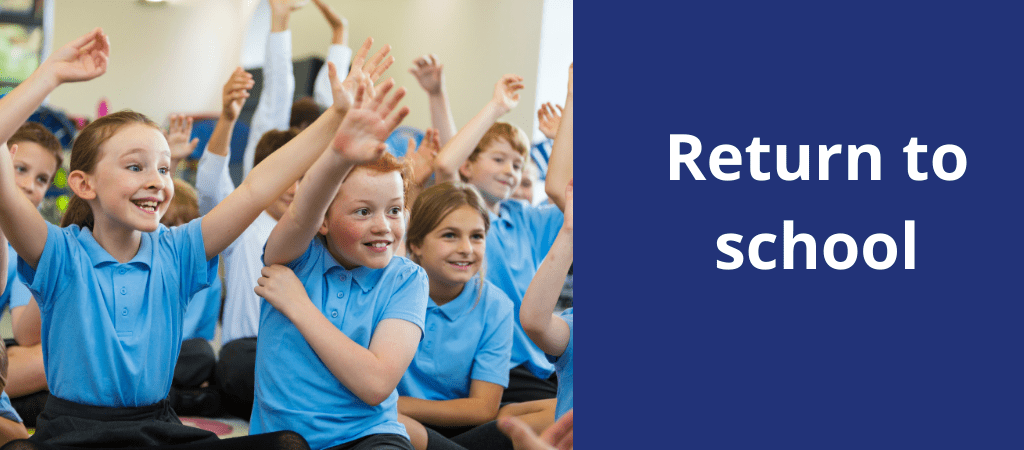
Five tips for teachers returning to school from remote learning.
For many schools in NSW the easing of COVID-19 restrictions in their local government area also signals the long-awaited return to schools.
School staff will need to support students in the transition back to the classroom, and at the same time manage their own transition and anxiety.
Here are our top tips on how to support returning students to try to make the transition back to school as seamless as possible.
Each tip includes a lesson activity idea you could include in lessons during the first weeks of students returning.
1. Validate how students are feeling
The rapidly changing advice on restrictions recently will likely have had substantial impacts on how students are feeling about returning to school. They may be experiencing a host of emotions in regard to the announcement of new changes, including anxiety, excitement, disappointment and anger.
As educators, it is important to listen to students’ concerns and, even if the emotions are extreme, express understanding and empathy. Building these conversations into lessons on students’ return will support students’ to feel like their experiences and ensuing emotions are recognised.
What to try
- Emotions callout: Have each student call out the emotions they’re feeling about returning to school. They do not need to provide any reasons why they are feeling that way, they are just identifying their feeling. This helps each student know how they and other students are feeling, what different emotions look like, and how to better interact with their peers based on how they’re feeling. If there are high levels of anxiety amongst the class group then a broader discussion regarding the nature of those anxieties may be necessary.
- Managing uncertainty: Check out this lesson idea from ReachOut where students identify the uncertainties brought about by COVID-19, analyse how these make them feel, and develop and implement personal coping strategies.
2. Give students the space to talk
Students may have lots of thoughts and questions about the virus, the current measures in place and how it will affect their education. Of course, there is a need to make sure students catch up on work they may have missed. However, balancing more content-driven lessons with discussion-based lessons, could be one approach to allowing students to explore these thoughts and questions in a supportive space.
What to try:
- Primary school – extended “circle time” check ins as a whole class can be a helpful way to share experiences and re-establish skills and class routines such as listening to others, turn-taking, and maintaining concentration.
- Secondary school – build time into your lessons to allow students to connect and share their experiences. You could use current news items as a stimulus for the discussion or you could approach small groups and instigate a discussion with them while other groups continue with the learning task.
3. Be positive
Whilst it is incredibly important to acknowledge the challenges and losses that we have all experienced due to the virus, a positive approach to the future is going to be very important to support students to feel like they have control over what is happening in their lives during these uncertain times.
Focusing on building strong relationships and looking to the future with confidence may help alleviate some of the worry that students may be experiencing.
What to try:
- Initiate a discussion amongst your students about positive things that have come out of the COVID situation. Encourage students to look for silver linings. Ask them to consider how we might keep some of those good things going. For example, people have been using their cars a lot less and pollution has gone down – we could commit to walking and cycling more. It is important to emphasise that recognising the positive does not invalidate or downplay the negatives.
4. Model good coping behaviours for students
Students will look to their teachers to be positive role models through this process. How you handle your fears, your own stress, and how you act throughout the day will impact how students assess their own situations and react.
What to try:
- Sharing your own experiences with anxiety and uncertainty, as well as your coping strategies, can make students feel less alone and can provide them with a guide for how to handle the situation themselves. In most cases it is appropriate to be open and honest with students in a developmentally appropriate way if they ask tough questions about COVID or what the future might hold.
5. Take care of yourself and know your limits
Our capacity to support others is limited by our own physical and mental well-being. Remember that being a teacher is tough – especially during COVID-19 – and you may be struggling to keep yourself well throughout all of this. Check out our recent blog that explored strategies for self-care.
Author: Janice Atkin, ACHPER NSW Professional Learning Officer
18 October 2021


